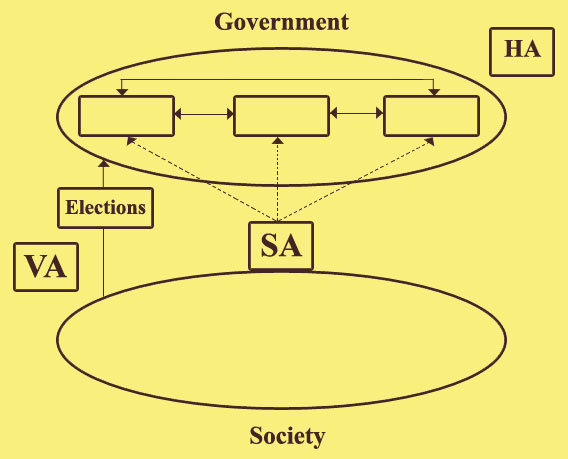Different types of Accountability
Accountability is the capacity to hold those running the government responsible for their acts while in public office.
Vertical Accountability (VA): the first and classic mechanism used in democracy to hold government officials accountable are periodic elections in which the citizenry can choose to reelect the current representatives or replace them. This is a formal mechanism, and as we have seen, political rights are in good shape in the region. However, vertical accountability mechanisms (elections) are limited only to representative bodies, and typically only operate once every 4-6 years. They are also very clumsy instruments, which do not allow for targeted expression of demands on individual issues.
Horizontal Accountability (HA): is a mechanism by which organisms within the State control each other. The classical expression is the checks and balances among executive, legislative, and judicial branches. However, most democracies have created a series of new mechanisms to carry this out, such as the Ministério Público (Public Prosecutor) in Brazil, the Anti-corruption Office in Argentina, various ombudsman organizations, etc.
Societal Accountability (SA): this mechanism is the one introduced by Peruzzotti and Smulovitz. Society gets mobilized regarding certain issues, and pressures the State to react. Societal accountability is a vertical mechanism because it comes from the population. However, the effect is generally to trigger the action of existing horizontal mechanisms within the State.

